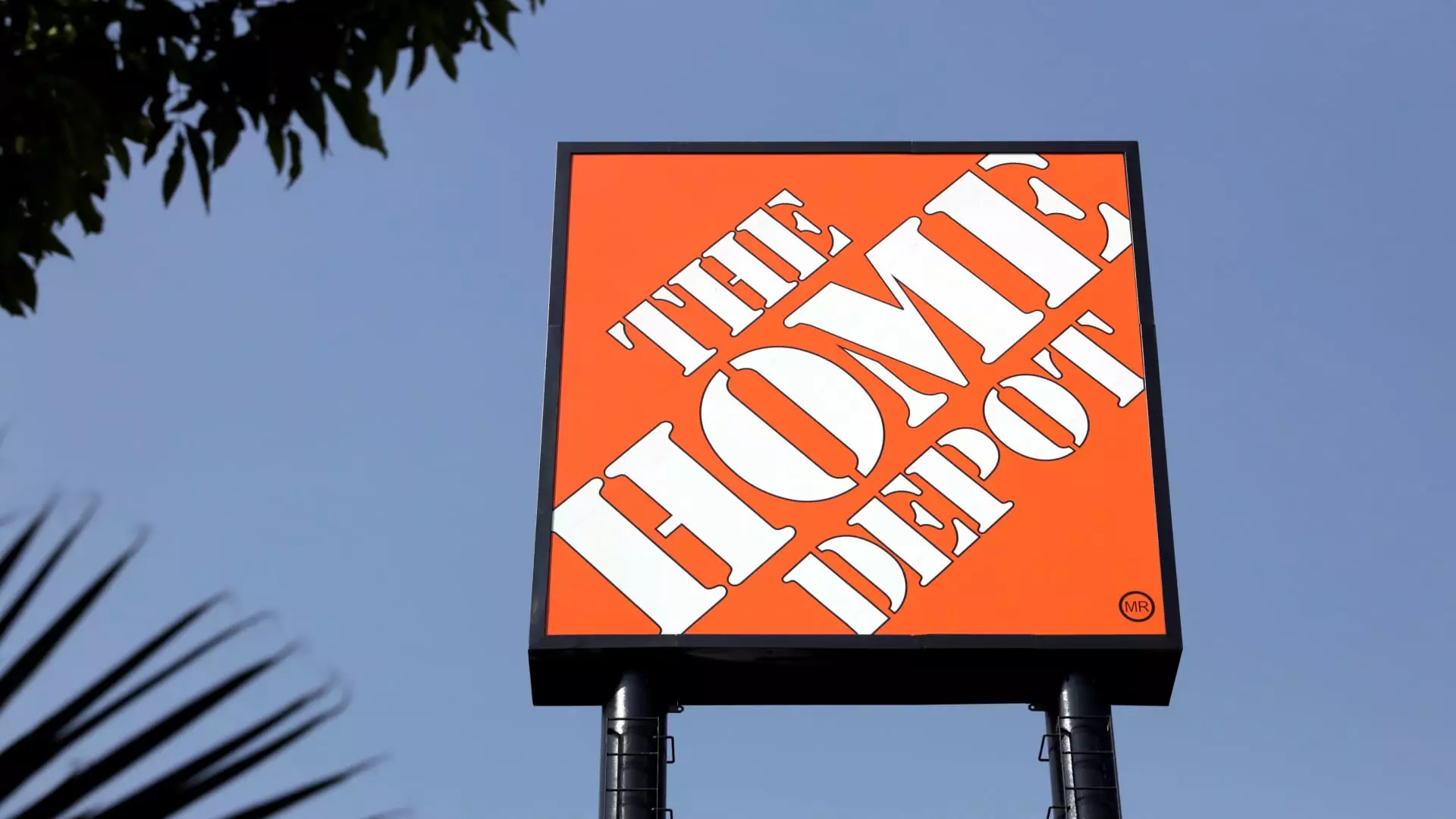Home Depot, a cornerstone of the home improvement retail market, reported an impressive uptick in quarterly sales, growing by over 6% year-on-year. This increase is attributed to several factors, including the integration of a newly acquired business, SRS Distribution, and a surge in demand resulting from weather-related repairs following hurricanes. Despite the favorable conditions, the retailer remains cautious, as its overall sales outlook has shifted, now projecting a 4% increase for the year, up from initial estimates of 2.5% to 3.5%. This shift reflects the impact of the SRS acquisition, which contributes significantly to Home Depot’s revenues by catering to professional markets.
The company’s strategic acquisition of SRS Distribution marks its largest in history, a bold move intended to bolster its position in the roofing and landscaping sectors. This decision not only reinforces Home Depot’s market share but also opens avenues for increased sales from professional customers, a segment that has proven lucrative for the retailer. As consumer behavior evolves, with many individuals postponing home improvement projects amid fluctuating economic conditions, Home Depot appears to be positioning itself to capture a larger slice of the market when consumer confidence rebounds.
Consumer Behavior and Economic Pressures
Despite the positive figures reported, consumer behavior continues to pose challenges for Home Depot. CFO Richard McPhail noted that many customers are deferring purchases, refraining from making significant investments in home projects until they experience a more favorable financial environment, particularly concerning mortgage rates and borrowing costs. This hesitance is palpable, even among financially stable consumers, with around 90% of Home Depot’s DIY customer base being homeowners.
The lingering effects of high inflation and elevated interest rates have impacted discretionary spending, forcing consumers to prioritize essential expenditures over home improvement projects. The company’s previous projections indicated a decline in comparable sales, which have now seen eight consecutive quarters of negative growth. The current dip of 1.3%, while better than anticipated, highlights a notable trend of consumer caution that could weigh heavily on the retailer’s performance if economic conditions do not improve.
Home Depot’s sales have inevitably been influenced by broader economic conditions, especially in the housing market. Higher interest rates have stifled housing turnover, leading to less urgency for home repairs or upgrades. Even though Home Depot has noted a degree of pent-up demand for remodeling projects, the question remains: when will this demand translate into actual sales? The outlook is somewhat optimistic, with McPhail suggesting that the worst may be over regarding housing turnover declines, yet uncertainty still looms regarding when consumers will feel ready to act.
Furthermore, even as consumer sentiment remains fragile, challenges such as rising mortgage rates complicate predictions for home improvement spending. It is critical for Home Depot to navigate these complexities carefully in order not to alienate its customer base during uncertain times.
Looking ahead, Home Depot still envisions growth, planning to open approximately 12 new stores before the fiscal year concludes in early February. The optimistic stance may be bolstered by favorable weather conditions experienced during the quarter, which provided short-term gains in sales of outdoor items, painting supplies, and repair materials in response to hurricane preparations and damage.
While Home Depot aims to capitalize on these emerging opportunities, external factors remain a significant concern. The potential for tariff-induced price increases could necessitate price adjustments for consumers, as noted in comments from other retail leaders. This could create additional friction in consumer spending habits, especially if Home Depot is forced to raise prices while maintaining a competitive edge.
Home Depot’s latest quarterly results showcase a blend of resilience and caution in the face of economic challenges. The integration of SRS Distribution, emphasis on professional markets, and effective management of seasonal weather events all contribute to positive sales figures. However, the overarching economic landscape, characterized by inflation and fluctuating consumer confidence, presents significant challenges that may inhibit future growth.
As Home Depot continues to monitor market conditions and adapt to consumer behavior, the path forward remains both promising and unpredictable. The company’s ability to weather economic storms while meeting consumer needs will ultimately determine its longevity and success in an ever-evolving retail landscape.

